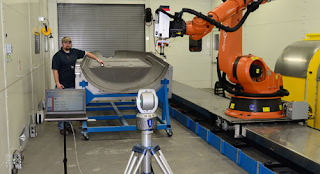The Power of Tool Center Point (Tcp) in Robotics
Tool Center Point
(TCP) refers to the specific location on a tool or end effector where its
movements and operations are measured or controlled. The TCP is a crucial
reference point in various industrial applications, such as robotic systems,
machining, and automation.
The TCP is typically defined as the point at the tip or end of the tool where the desired action or interaction occurs. For instance, in a robotic arm, the TCP represents the position where a tool engages with a workpiece or performs a specific task.
By knowing the exact location of the TCP, engineers, and programmers can program and control the movements and actions of the tool accurately. The TCP's coordinates are determined in relation to a fixed reference point, often the robot's base or a specific coordinate system within the workspace.
In the field of robotics, the Tool Center Point (TCP) is a crucial concept that plays a vital role in determining the end effector's precise position and orientation on a robot.
The Tool Center
Point (TCP) refers to a specific point on a robot's end effector where the tool
or device is mounted. It represents the center of the tool and is used as a
reference for positioning and controlling the robot's movements.
The TCP is important because it is the reference point for programming the robot's movements and performing tasks accurately. By specifying the TCP, you can control the position and orientation of the tool during operations such as picking and placing objects, welding, cutting, or any other task the robot is designed to perform.
The TCP is typically defined by three parameters: X, Y, and Z coordinates representing the position of the TCP in relation to the robot's base and three angles or rotations (roll, pitch, and yaw) that define the orientation of the TCP.
When programming the robot, you can define the TCP's position and orientation relative to the robot's base coordinate system or specify it in relation to a specific frame or reference point in the robot's workspace. The exact method of defining the TCP depends on the robot's control system and the programming language used.
Importance of TCP Definition:
Accurate TCP definition is crucial for various robotic applications, such as industrial automation, manufacturing, assembly, and
surgical robotics. It ensures precise control over the robot's movements and
guarantees accurate positioning and manipulation of objects. Explore the
importance of the TCP in robotics and its significance in achieving accurate
and efficient operations:
1. Defining the Tool Center Point (TCP): The Tool Center Point, often called the End Effector
or Tool Point, is the specific point on a robot's end effector where the
desired action or interaction occurs. It is the position around which all
movements and calculations are based. The TCP determines the exact location and
orientation of the tool in relation to the robot's base, allowing for precise
control of the robot's actions.
2. Accuracy and Precision: The TCP is crucial in achieving accuracy and
precision in robotic operations. Engineers and programmers can ensure that the
robot's movements are precisely aligned with the intended task by accurately
defining the TCP. This is particularly important in applications where small
deviations, such as in medical procedures or delicate assembly tasks, can have
significant consequences.
3. Tool Calibration: Calibrating the TCP is essential to ensure that the robot's perception
of the tool's position matches its physical location. Factors such as thermal
expansion, mechanical tolerances, and wear and tear can introduce errors,
leading to discrepancies between the intended TCP and the actual tool position.
Regular calibration helps eliminate these errors, maintaining the robot's
accuracy and preventing potential failures or accidents.
4. End Effector Adaptability: Different tasks require different end effectors or
tools. The TCP allows for easy adaptation of the robot to various tools,
enabling it to perform a wide range of applications. By accurately defining the
TCP for each tool, the robot can seamlessly switch between tasks without
compromising accuracy or performance.
5. Path Planning and Collision Avoidance: Path planning is critical to robotic operations,
ensuring the robot can move efficiently and safely. The TCP plays a key role in
path-planning algorithms as it determines the position and orientation of the
tool during the robot's trajectory. By considering the TCP, robots can avoid
collisions with obstacles and optimize their movements to minimize cycle times.
6. Human-Robot Collaboration: With the advancement of collaborative robots
(cobots), the TCP becomes even more important. The TCP must be precisely
defined in scenarios where robots work alongside humans to ensure safe and
effective collaboration. By accurately determining the TCP, robots can interact
with humans while avoiding accidental collisions or harm.
Conclusion
The Tool Center Point (TCP) is a vital
concept in robotics, enabling precise control over a robot's movements and
accurate positioning of tools or end effectors. Whether it's industrial
automation, manufacturing, or surgical robotics, a well-defined TCP ensures
efficient and reliable operations in the world of robotics.



Comments
Post a Comment